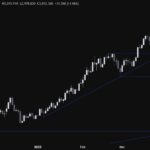
Yuan Devaluation: What It Means for Global Markets and Trade
Tháng 4 8, 2025
Gold Price Forecast: Balancing Between Bearish Corrections and Bullish Opportunities
Tháng 4 8, 2025European Indices Face Rebound Amidst U.S.-China Tariff Tensions
In recent weeks, European stock indices have experienced significant turbulence as escalating tariff tensions between the U.S. and China continue to exert pressure on global markets. In light of these developments, there are signs suggesting that these markets may be poised for a rebound, despite facing sharp declines.
Current Market Conditions: Tariff Tensions and Losses
The ongoing diplomatic strife between the United States and China has had far-reaching effects on European markets, which encompass notable indices such as the FTSE 100, DAX, and Stoxx 600. Recent announcements threatening additional tariffs from the U.S. aimed at China have triggered a cascade of sell-offs across European shares. In fact, the DAX plummeted by 4.1%, while the Stoxx 50 and Stoxx 600 recorded declines of 5.4% and 4.5% respectively. The FTSE 100 also felt the brunt of market anxieties, dropping 4.4%.
Amidst these developments, it’s crucial to understand common pitfalls for investors navigating such turbulent times. As highlighted in the blog on investment strategies, avoiding overtrading and recognizing costs that can erode returns is essential, especially in the context of global economic uncertainties stemming from U.S.-China relations. For more insights, check out the article on top investment mistakes to avoid in 2023.
Despite this grim landscape, there have been hints that these markets might be stabilizing, with futures exhibiting positive movement prior to the market opening. Analysts are cautiously optimistic about the potential for short-term rebounds, suggesting that a market bottom may be within reach. The VIX, a gauge of market volatility, has spiked, reflecting heightened investor anxiety over these developments.
Economic Outlook: Rising Recession Fears and Trade Negotiations
As the specter of recession looms, concerns about its implications for earnings, particularly in export-oriented regions, are becoming increasingly pronounced. The trade conflict between two of the world’s largest economies has raised alarms about the stability of global trade, which could impact the growth trajectory of the European economy.
In this context, China’s President Xi Jinping convened global CEOs to discuss U.S.-China trade tensions, emphasizing the importance of international stability. His insights underline China’s commitment to fair treatment for foreign companies amidst tariff conflicts, a factor that could influence the negotiations. For a detailed account of these strategic moves, see the article on three strategic moves by China.
In response to these pressing issues, the European Commission has stepped forward with proposals aimed at de-escalating the trade situation. The notion of a “zero-for-zero” tariff deal has been put forth, which could pave the way for more favorable negotiations. This proactive stance provides a glimmer of hope for investors and could potentially reinvigorate confidence across European markets.
Conclusion: Navigating the Challenging Terrain
As European indices navigate the stormy waters of tariff disputes and economic uncertainty, the path forward remains fraught with challenges. The possibility of rebounds offers an intriguing prospect amidst the market’s volatility, suggesting that investors should remain vigilant and informed. The ongoing economic dialogue and potential resolutions may very well dictate the direction of these markets in the days to come.
For anyone invested in the European stock markets, staying attuned to developments in U.S.-China relations and the broader economic indicators will be critical. As these indices attempt to find their footing, the interplay of geopolitical events and market sentiment will undoubtedly play a crucial role in shaping the future landscape.

